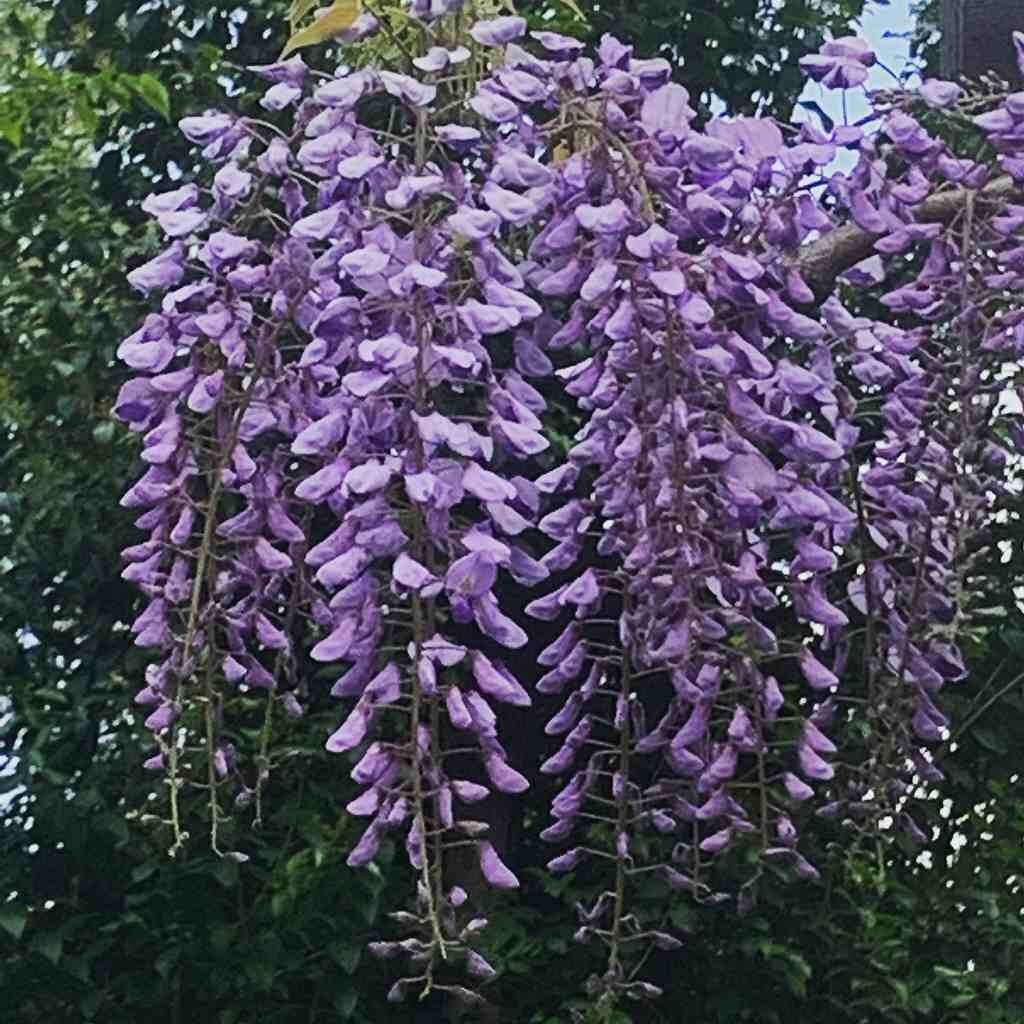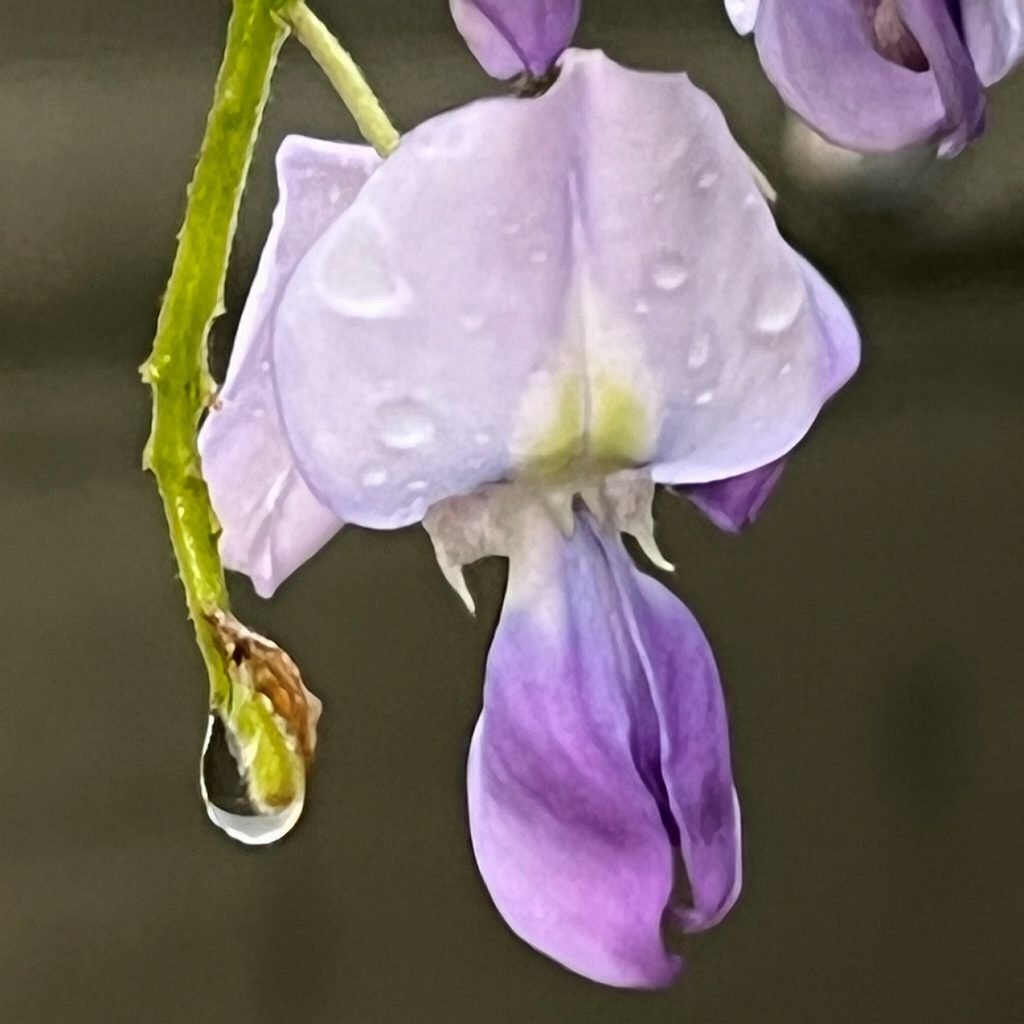フジの花は房状に連なって下垂し、次々に咲いていきます。風で花房を揺らし、芳香を漂わせ、優美でたおやか。古来より女性の象徴でした。
The wisteria flowers hang down in tufts and bloom one after another. The wind shakes the flower cluster, giving it a fragrance, and it is graceful and supple. It has been a symbol of women since ancient times.
【仮名】フジ, ノダフジ, ヤマフジ
【和名】藤, 野田藤, 山藤
【英名】Wisteria
【学名】Wisteria
【誕生】04/ 05, 04/ 29, 05/ 21, 05/ 31
【開花】04, 05月
【花色】White, Pink, Violet, Yellow




フジ
フジの自生
フジはマメ科の蔓性落葉木。原産地はアジア、北米、欧州です。日本では本州、四国、九州に分布。低山や平地の林縁、崖などに自生しています。栽培は公園や庭で蔓を棚や壁に這わせて花房を観賞。花の名前は、風で花が散るので、「吹き散る」が転じて「フヂ」になったそうです。
フジの花房
フジの花は房状に連なって下垂。付け根から先端へ次々と咲いて芳香を放ちます。花の造りは上に蜜標のある旗弁1枚、下に舟弁(竜骨弁)2枚、横に翼弁2枚。いわゆる蝶形花です。食べられる花なのでシロップ漬けやサラダ、天ぷらなどにも。花後は大きな豆果が垂れ下がります。
フジの種子
フジの豆果は、種子が厚い果皮に収められています。熟すると果皮が木質化して硬くなり、冬になって乾燥すると左右に裂開。左右それぞれが捻れて、中の種子が勢いよく飛び散ります。なお、種子はアルカロイド系で毒性のある「シチシン」を含有。食べると中毒の危険があります。
フジの茎葉
フジの茎葉は、蔓が立ち木に巻き付くと駆け上がり、覆うように繁ります。葉を広げて日光を遮り、蔓で幹を締め付け、木の成長を阻害。それで木が枯れてしまうこともあります。もともと「藤」は蔓性植物全般を意味する漢字。それが、やがてフジだけを意味するようになりました。
フジの種類
フジの種類はおもに2つです。「野田藤」は本州を中心に自生。花は小さいものの、垂れ下がる花房が長いので、次から次へと咲き続けます。絡みつく蔓は反時計回り。「山藤」は西日本に自生しています。花が大きく、花房が短いので、まとまって隙間なく開花。蔓は時計回りです。
フジの表象
フジの花は香り高く、たおやか。そのため、古来より美しい女性の象徴でした。清少納言は随筆『枕草子』で「色あひ深く花房長く咲きたる藤の花、松にかかりたる」と書いています。ここでマツは力強い男性の象徴。つまり、優美な女性が逞しい男性に寄り添うさまを表しています。
Wisteria
The wisteria is a vine deciduous tree of the leguminous family. Origins are Asia, North America and Europe. In Japan, it is distributed in Honshu, Shikoku, and Kyushu. It grows naturally on low mountains, forest edges of flatlands, and cliffs. For cultivation, vines crawl on shelves and walls in parks and gardens to appreciate the flower clusters. The name of the flower is that the wind scatters the flowers, so it seems that “Fukichiru: spraying” has changed to “Fuji: wisteria”.
The wisteria flowers are tufted and droop. It blooms one after another from the base to the tip and gives off a fragrance. The flowers are made with one flag valve with a nectar guide on the top, two boat valves (keel valves) on the bottom, and two wing valves on the side. It is a so-called butterfly-shaped flower. As it is an edible flower, it can be used for pickles in syrup, salads, tempura, etc. After the flowers, big legumes hang down.
The wisteria legumes are housed in thick pericarp seeds. When ripe, the pericarp becomes woody and hard, and when it dries in winter, it dehiscences to the left and right. The left and right sides are twisted, and the seeds inside are scattered vigorously. The seeds contain alkaloid-based and toxic “cytisine”. There is a risk of poisoning if you eat it.
When the vines wrap around the standing tree, the foliage of the wisteria runs up and grows to cover it. Spread the leaves to block sunlight, tighten the trunk with vines, and inhibit the growth of trees. That can cause the tree to die. Originally, “Fuji” is a Chinese character that means all vines. It soon came to mean only the wisteria.
There are mainly two types of the wisteria. “Noda Fuji” grows naturally mainly in Honshu. Although the flowers are small, the hanging flower clusters are long, so they continue to bloom one after another. The entwined vines are counterclockwise. “Yama Fuji” grows naturally in western Japan. The flowers are large and the flower clusters are short, so they bloom together without any gaps. The vines are clockwise.
The wisteria flowers are fragrant and graceful. Therefore, it has been a symbol of beautiful women since ancient times. Sei Shonagon wrote in her essay “The Pillow Book” that “a deeply colored flower cluster, a long-blooming wisteria flower, hangs on a pine tree.” Here, pine is a symbol of a powerful man. In other words, it represents a graceful woman snuggling up to a strong man.


